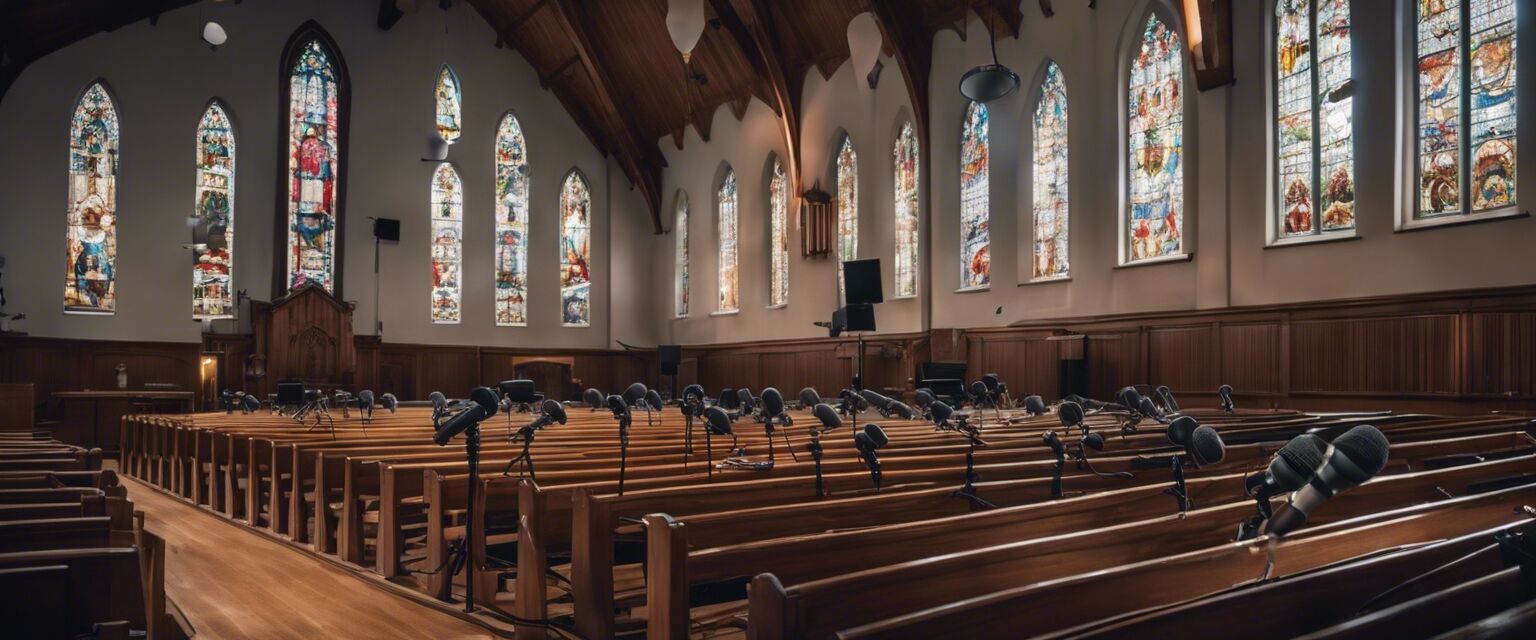
Live Sound Mixing for Churches
Key Takeaways
- Understanding equipment options is crucial for effective live sound mixing.
- Proper microphone placement enhances sound quality during services.
- Training volunteers on sound equipment ensures smooth operation.
- Regular maintenance of sound systems prolongs their lifespan and performance.
Live sound mixing is an essential aspect of church services, as it enhances the overall worship experience. A well-mixed sound setup ensures that every member of the congregation can hear the message being delivered clearly. In this comprehensive guide, we will explore the best practices and equipment you need for effective live sound mixing tailored specifically for churches.
Understanding Live Sound Mixing
Live sound mixing involves the management and balance of sound inputs during live events. This requires a good understanding of sound sources, such as microphones, speakers, mixers, and amplifiers. Each component plays a vital role in creating a seamless audio experience for the congregation.
Essential Components of a Church Sound System
| Component | Description |
|---|---|
| Microphones | Devices used to capture sound from pastors, choirs, and instruments. |
| Mixers | Equipment that combines different audio inputs and allows adjustment of sound levels. |
| Speakers | Output devices that distribute the mixed sound throughout the church. |
| Amplifiers | Equipment that increases the power of the audio signal for better sound projection. |
| Cables & Accessories | Wiring and supporting equipment that connect various components. |
Choosing the Right Equipment for Your Church
Your choice of sound equipment will greatly influence the quality of sound mixing in your church. Below are some considerations when selecting your live sound equipment:
Tips for Beginners
- Start small with a basic setup and upgrade as the church grows.
- Consult with sound engineers to get valuable insights on equipment choices.
- Test the equipment in the actual church setting before finalizing your purchases.
- Consider wireless systems for mobility and ease of movement on the stage.
Microphone Placement Techniques
Microphone placement is essential for capturing clear sound. Here are some common techniques:
- Close Miking: Positioning the microphone close to the sound source to minimize background noise.
- Distance Miking: Placing the mic further away to capture ambient sound, useful for choirs.
- Angle Orientation: Adjusting the microphone angle to target the sound source optimally.

Mixing Techniques for Church Services
Mixing sound during church services requires a keen ear and some technical know-how. Here are a few essential mixing techniques:
- Gain Staging: Set appropriate input levels to prevent distortion and maintain clarity.
- Equalization: Adjust the frequency response to enhance the clarity and warmth of the sound.
- Sound Check: Conduct thorough sound checks before the service to make necessary adjustments.
- Monitoring: Use a monitoring system to hear how everything sounds in real-time.
Common Issues and Solutions in Live Sound Mixing
| Issue | Possible Solution |
|---|---|
| Feedback Noise | Adjust microphone placement and reduce volume levels. |
| Uneven Sound Distribution | Check the speaker orientation and ensure they are powered correctly. |
| Inaudible Voices | Increase the gain on the respective microphones or reconsider placement. |
Training Volunteers for Sound Operation
Many churches rely on volunteers to operate sound equipment. Providing adequate training is crucial to ensure effective sound management. Consider these training elements:
- Workshops on equipment usage and sound mixing basics.
- Hands-on practice during rehearsals and services.
- Creating a sound operation manual for reference.

Maintenance of Your Sound System
Regular maintenance of your church sound system can prevent issues and prolong its lifespan. Here are some maintenance tips:
- Regularly check and replace damaged cables and accessories.
- Keep the mixing equipment clean and dust-free.
- Schedule periodic check-ups with a professional technician.
Conclusion
Effective live sound mixing is vital for any church wanting to create a welcoming and engaging worship atmosphere. By understanding the equipment, mastering mixing techniques, and training volunteers, you ensure a fantastic auditory experience for all attendees. Consider visiting our sections on microphones, mixers, and speakers for specific product recommendations and tips.
Pros
- Enhances the overall worship experience
- Encourages active participation in services
- Increases accessibility for all congregation members
Cons
- Initial setup costs can be high
- Requires ongoing training for volunteers
- Technical issues can disrupt services if not managed properly
